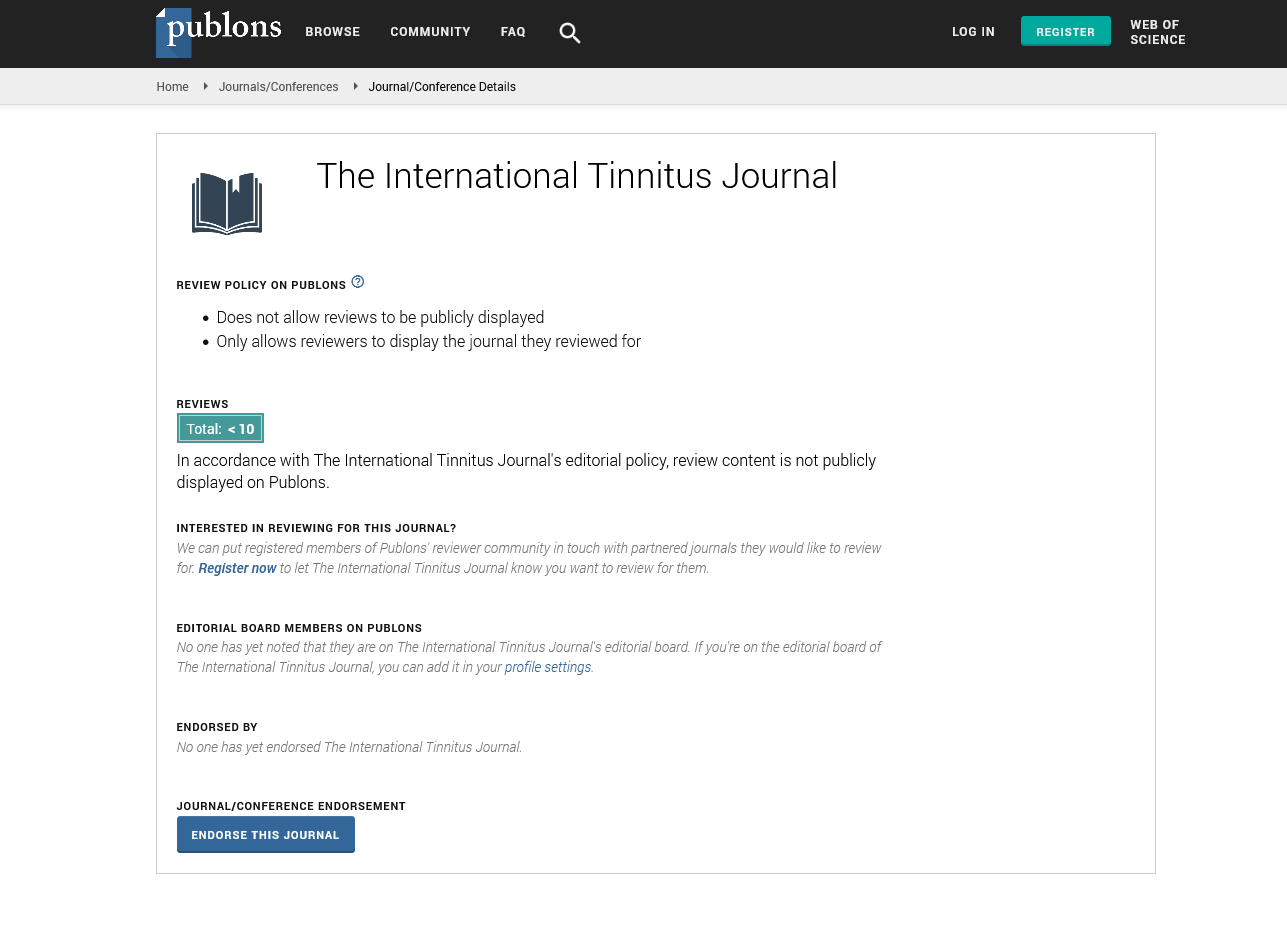The International Tinnitus Journal
Official Journal of the Neurootological and Equilibriometric Society
Official Journal of the Brazil Federal District Otorhinolaryngologist Society
ISSN: 0946-5448

Google scholar citation report
Citations : 12717
The International Tinnitus Journal received 12717 citations as per google scholar report
The International Tinnitus Journal peer review process verified at publons
Indexed In
- Excerpta Medica
- Scimago
- SCOPUS
- Publons
- EMBASE
- Google Scholar
- Euro Pub
- CAS Source Index (CASSI)
- Index Medicus
- Medline
- PubMed
- UGC
- EBSCO
Abstract
The Toll-like-receptors signaling modulated by exosomal miRNA is linked with induction of autophagy for protecting auditory system: Novel therapeutic target for inner ear disease
Author(s):Ken Hayashi, Hideaki Sakata
Nanoparticle-based drug delivery (30–150 nm) is a promising new strategy for the treatment of inner ear diseases. Exosomes are biological nanoparticles secreted in the extracellular area from all cells, including inner ear sensory cells that mediate intercellular messages to recipient cells by delivering RNAs cargo. There is especially strong evidence that microRNA (miRNA) cargo in extracellular vesicles can alter the function of recipient cells. Therefore, exosomal miRNAs hold great potential for clinical application in the treatment of inner ear diseases. Recently, researchers have identified two fascinating aspects of exosomal miRNAs. First, they are recognized by Toll-like receptors (TLRs), which trigger the signaling cascade of immune responses. Second, they are focused on the autophagic cargo of exosomes and the signaling pathways involved in exosome-induced autophagy in recipient cells. Autophagy is a dynamic lysosomal degradation and recycling process in eukaryotic cells. The induction of autophagy confers protection against inner ear sensory cell death. Thus, exosomal miRNAs that interact with TLRs in sensory hair cells could induce autophagy to protect the auditory system. Extracellular exosomes provide new insights for research with the help of natural nanoparticles, not only as detection indices but also as nanocarriers for the delivery of therapeutics against inner ear diseases. However, this technique has not been established for the auditory system, although it has been well discussed in the field of cancer. In this paper, we review the coordination mechanisms of exosomal miRNAs and autophagy through the TLRs signaling pathway and summarize the function of extracellular exosomes as potential carriers in a novel drug delivery system for inner ear disease.
Text PDFShare this



